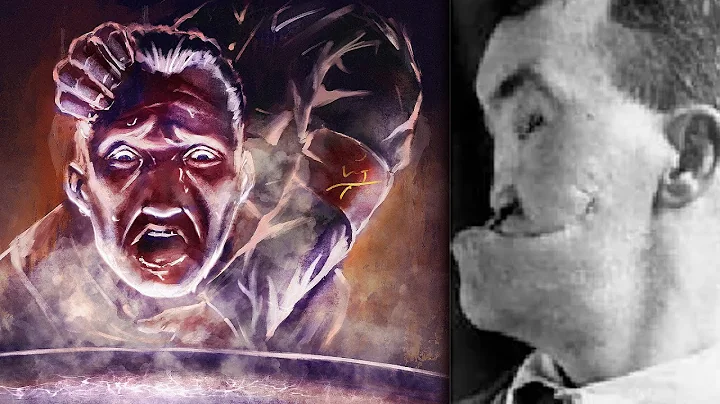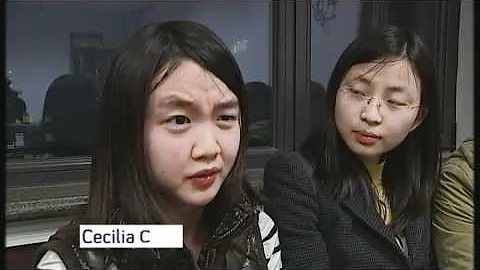
The former site of Qiongya Senior Lenin School located in Tutuling Village, District 4, Lehui County
Qiongya Revolutionary Base Area is the only base area established by the Communist Party of China on an island, creating a pattern of armed struggle in which "the red flag did not fall for twenty-three years" The glorious history has written the revolutionary miracle of "not being alone on an island" and made immortal contributions to the liberation of the Chinese people and the great rejuvenation of the Chinese nation.
The armed separatist regime of workers and peasants in Qiongya is still alive
The people of Hainan have a glorious revolutionary tradition, which provided a mass foundation for the establishment of the Qiongya revolutionary base. During the Great Revolution, farmers' associations were established in Qiongya counties, and they carried out extensive struggles to resist rents and taxes and punish bullies, and the party organization was able to take root and develop. In June 1926, the first Qiongya Congress of the Communist Party of China was held in Haikou, which established the party’s leading organ in Qiongya. After the failure of the Great Revolution, in September 1927, in accordance with the call of the Central Committee of the Communist Party of China to launch the Autumn Harvest Uprising, the Qiongya Special Committee launched the Quanqiong riot, and the Qiongya Revolution set off the first revolutionary climax. In November of the same year, the Qiongya Special Committee held a meeting in Lesi District and established the policy of building rural base areas. In December of the same year, the workers' and peasants' revolutionary army captured Lingshui County, Hainan, and the Lingshui County Soviet Government, Hainan's first red regime, was established. By the spring of 1928, the Qiongya Revolutionary Base with Lesi District as the center was basically formed.
The Qiongya Revolutionary Base Area continued to overcome difficulties during the Agrarian Revolution and developed into an important red position in the southernmost tip of mainland China. In March 1928, the Kuomintang troops launched an attack on the base area, and the Qiongya Revolutionary Base Area was severely damaged. In mid-August 1929, a joint meeting of county party committee secretaries was held in Dongshan, Ding'an County. The meeting corrected the erroneous policy of "focusing on the city", established the struggle strategy of establishing rural base areas and implementing agrarian revolution, and recommended Wang Wenming He served as secretary (later acted by Feng Baiju) and saved the Qiongya Revolutionary Base Area. With the joint efforts of the party and the people, by the end of 1931, the Soviet regime was established in six counties, including Lingshui, Lehui, and Wanning. The population of the Soviet area reached more than 1 million, and the Qiongya Revolution entered its second climax.
At the same time, the Qiongya Revolutionary Base Area launched a vigorous agrarian revolution and ushered in two climaxes. During the first climax of the Agrarian Revolution from 1927 to 1928, the Lesi District Peasants' Congress passed the "Provisional Measures on Land Issues" and proposed localization of land rights to peasant associations and farmland rights to farmers on the basis of equal distribution of land. In principle, pilot projects were carried out in Lesi District and other places; from 1930 to 1932, land distribution was widely carried out in new districts such as Ding'an District, Qiongdong District and Lehui District. In the process of implementing the Land Law of the Soviet Republic of China, Adjustments were made according to local conditions and fully mobilized the revolutionary enthusiasm of the broad masses.
Qiongya Communists serve the people with practical actions, and the people also participate in the revolutionary struggle in various ways. By the end of 1931, the number of Red Army troops in the base area reached 2,000, and Quanqiong had an armed force of more than 7,000 people. Among them, Qiongya women formed the "Women's Special Agent Company of the Second Independent Division of the Chinese Workers' and Peasants' Red Army" on May 1, 1931. They successively participated in battles such as Wenshi and Shamaoling, and fought bloody battles during the "encirclement and suppression" campaigns of the Kuomintang army. ridge. The heroic deeds of the Red Detachment of Women were called "a model of world revolution" by Zhou Enlai after the founding of New China. They were adapted into movies and Peking Opera, and are well known to the world.
Even when most of the base area was lost and contact with the outside world was completely lost, the red flag of Qiongya always stood firm. In 1932, facing the second "encirclement and suppression" campaign by the Guangdong warlords, Feng Baiju led the Qiongya Special Committee to fight the enemy for 8 months in Ruishan County, Ruishan, China. He led the remaining 25 people to successfully break through the encirclement and preserved the fire in the base area. After four years of arduous guerrilla warfare and mass work, the Qiongya Special Committee was restored in 1936. After restoring contact with the central and provincial committees, it devoted itself to the anti-Japanese struggle.
Breaking through internal and external blockades to fight against Japanese aggression
During the Anti-Japanese War, faced with the pincer attacks of Japanese imperialism and the stubborn Kuomintang troops, the Qiongya Communists always persisted in the anti-Japanese struggle. In order to obey the overall anti-Japanese situation, the Qiongya Red Army guerrillas were reorganized in Qiongshan Yunlongxu (later renamed Qiongya Independent Corps), and fired the first shot of Qiongya's anti-Japanese war in Tankou.While resisting foreign enemies, the Hainan Kuomintang diehards planned to "anti-communism and destroy independence" and launched the "Meihe Incident" on December 15, 1940 to attack the Meihe base area. At a time of internal and external difficulties, the Qiongya Special Committee resolutely fought back the Kuomintang's anti-communist countercurrent, and on the other hand vigorously developed the anti-Japanese base areas behind enemy lines. In November 1941, the anti-Japanese democratic government of Qiongya Northeast District was established, and the "three-three system" was implemented politically. ", encouraged production economically, established schools at all levels culturally, and took the initiative militarily to ambush the Japanese army's communication lines, annihilate the stubborn anti-communist troops, and smash the "cannibalization" and "mopping up" of the Japanese and puppet troops. In 1943, in order to resist the tyranny of the Kuomintang, the Li people launched the Baisha Uprising. The Qiongya Special Committee actively cooperated to help attack the stubborn enemies and establish the Baisha base area. When Japan surrendered, the base area expanded to half of the island, and the Qiongya Independent Corps was expanded into the Qiongya Column, which grew to more than 7,700 people.
The Qiongya Communists' fearless sacrifice and heroic struggle have won the support and support of the people. During the Anti-Japanese War, the soldiers and civilians in the base areas launched more than 2,200 battles, killing and wounding more than 5,800 Japanese and puppet troops. They continuously compressed the Japanese-occupied areas, shattered Japan's dream of using Hainan Island as a "strategic base for the southward policy", and provided strong support to the National war of resistance. In order to achieve victory in the Anti-Japanese War, more than 5,600 commanders and soldiers of the Qiongya Column died on the battlefield. The people of Qiongya gradually recognized and accepted the Communist Party of China during the struggle. At the same time, overseas Chinese in Nanyang also successively organized the "Qiongqiao Relief Federation" and the "Eighth Route Army Aid Committee" to contribute to supporting the Chinese Communist Party in the war of resistance and national salvation. The love between the soldiers and civilians in Qiongya is a reflection of the Party spirit and purpose of the Communist Party of China, and is also a powerful barrier for the Qiongya War of Resistance.
Cooperate with the army to land and realize the liberation of Hainan
After the victory of the Anti-Japanese War, Qiongya's military and civilians effectively cooperated with the battle to liberate Hainan. In 1946, in accordance with the spirit of the instructions of the Central Committee of the Communist Party of China and the situation of the struggle on the island, the Qiongya Special Committee issued the "New Instructions on Persisting in the Struggle of Self-Defense", emphasizing that it would neither "withdraw north" nor "withdraw south" and insist on carrying out a war of self-defense, which received the central government's approval support. After that, the Qiongya Special Committee smashed three "encirclement and suppression" campaigns by the 46th Army of the Kuomintang and the six-month "clearance campaign" of the Kuomintang Cai Jin's military headquarters, annihilating more than 3,000 enemy people, conquering and occupying more than 40 towns and cities, and turning the tide of the war in one fell swoop. In the spring of 1947, the Wuzhishan Revolutionary Base was established. In 1948, the War of Liberation entered the strategic counter-offensive stage. Qiongya soldiers and civilians launched three major offensives in autumn, winter and spring to liberate large areas of land. With the victorious march of the Liberation War, the Kuomintang retreated steadily. The defeated army, led by Xue Yue, Chairman of the Guangdong Provincial Government, retreated to Hainan Island and set up the "Bering Defense Line" in an attempt to resist stubbornly. With the strong cooperation of the Qiongya military and civilians, the Fourth Field Army of the People's Liberation Army used wooden boats as the main navigation tool to break through the defense line in just 58 days, realizing the transformation from "Qiongya Revolutionary Base Area" to "Hainan Island".
Bear in mind the historical contribution and inherit the revolutionary spirit
The Qiongya revolutionary struggle has gone through three important historical periods: the Agrarian Revolution, the Anti-Japanese War and the Liberation War. "The red flag has not fallen for twenty-three years", which has witnessed the party's unremitting efforts in leading the people to achieve national independence and people's liberation. struggle. Looking back on the 23-year history of fighting on an isolated island, the Qiongya Revolutionary Base Area, as one of the earliest revolutionary base areas established by the Communist Party of China, has long contained a large number of enemy forces, strategically coordinated the agrarian revolution and anti-Japanese struggle in southern China, and cooperated with the People's Liberation Army to liberate Hainan. Played an important role in the history of Chinese revolution. The Qiongya Communists have always adhered to the ideals and beliefs of communism, and have always carried out the construction of the base area with perseverance. They have always insisted on relying on the masses, uniting the masses, mobilizing the masses, and sharing the same destiny with the masses. They have received the full support of the Qiongya people and overseas Chinese Support provided a vivid example of the emergence and formation of Mao Zedong Thought.
The Qiongya Revolutionary Base Area is the historical epitome of the Chinese revolution, and the Qiongya Revolutionary Spirit is also an important part of the spiritual pedigree of the Communist Party of China. In 23 years of countless heroic deeds, Qiongya soldiers and civilians have formed a revolutionary spirit of firm belief, self-improvement, the courage to sacrifice, relying on the masses, and loyalty to the party. This has demonstrated the political nature and personality of the Chinese Communists, and is a spirit that the Chinese Communist Party will never forget. A precious spiritual legacy of original intention and forging ahead.
Source: Jingyuan Xinyu





















